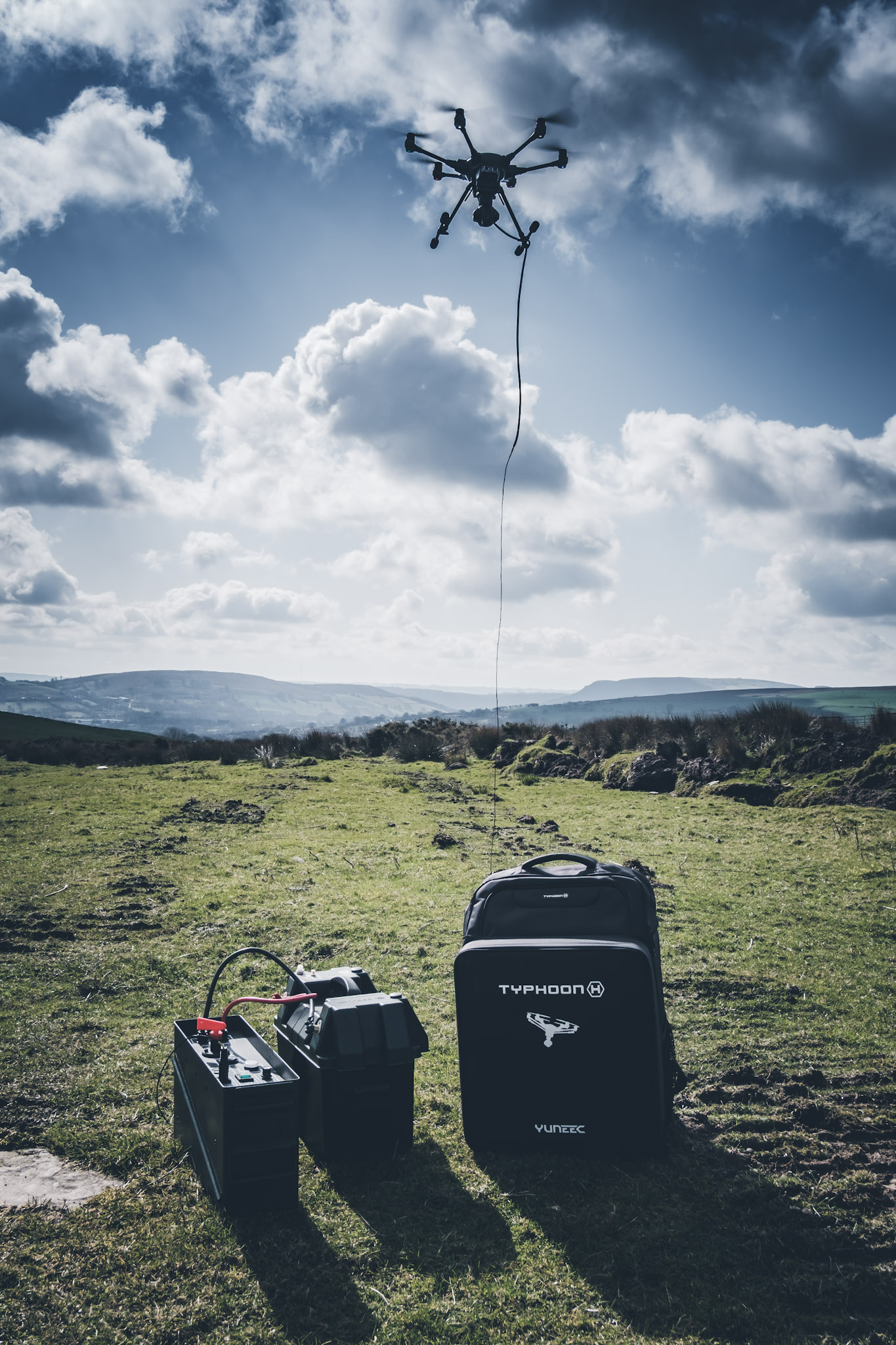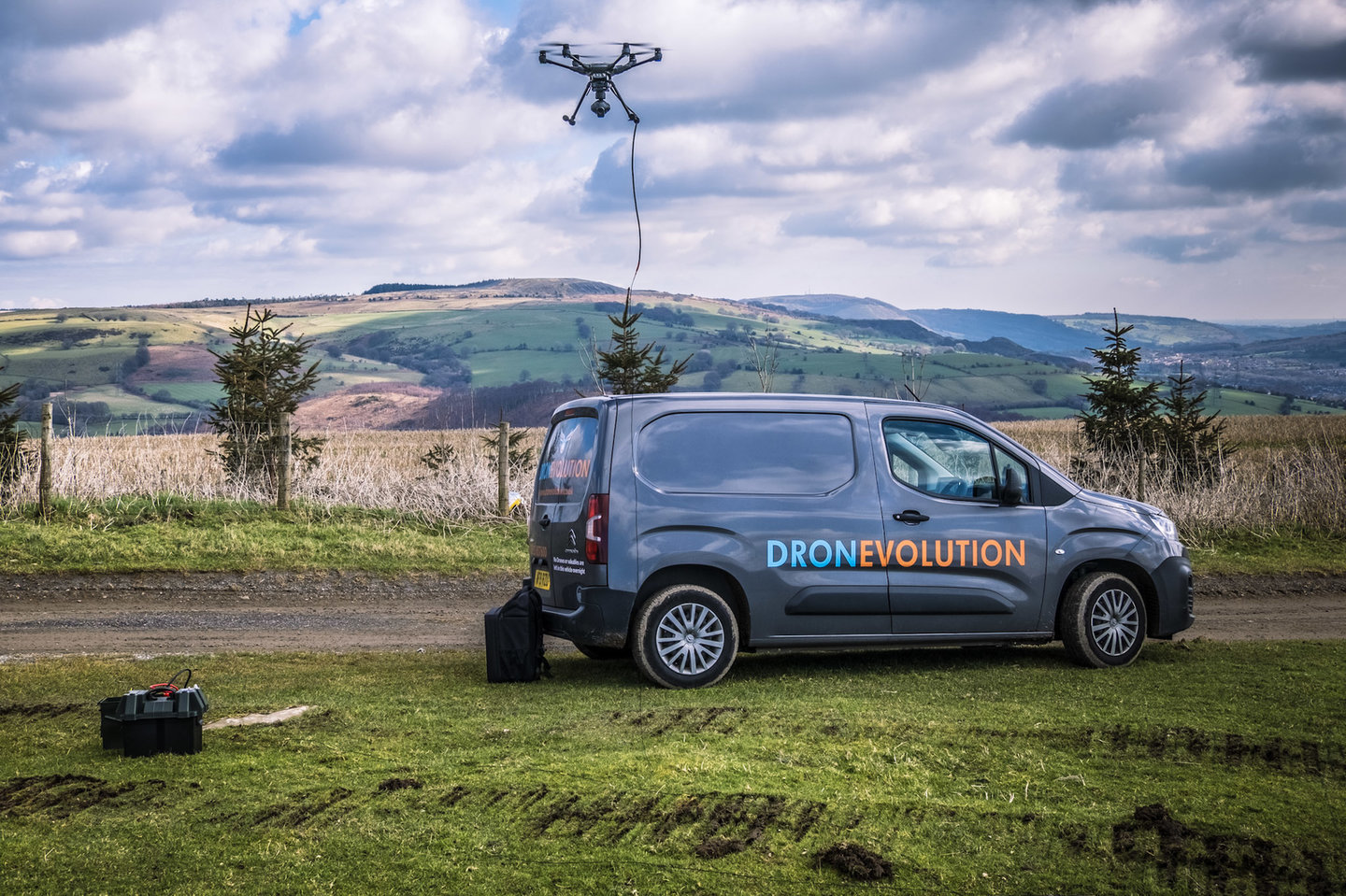AIR
Tethered UAVs: why wireless doesn’t always mean better
Small unmanned aerial vehicles (UAVs) are often praised for their low cost and ability to go almost anywhere, but sometimes tethering UAVs may be the better option. Harry Lye finds out why from Drone Evolution.
// Image: Drone Evolution
Since the mass commercialisation of small UAVs or drones, their defence and security benefits have become increasingly prevalent, both in an offensive and defensive capability.
For a mobile squad on the ground, their situational awareness capabilities help provide a better understanding of the battlespace; however, when it comes to an armoured column, fixed position or reconnaissance task, simple issues such as battery life can cause serious limitations.
This is where tethered UAVs come in. Able to fly in a fixed position for an indefinite period of time, a tethered system allows for constant surveillance over an area and can be attached to a reconnaissance vehicle to get more altitude than a traditional mast.
A key emerging player in this market is Wales-based Drone Evolution, which has worked with the UK’s Ministry of Defence and others in the development and deployment of its tethered drone solution.
Battery-powered vs tethered drones
Drone Evolution business development director Toby Townrow says the company’s core tethered drones offer a number of advantages for militaries when compared to their traditional counterparts, most notably when it comes to reconnaissance.
While traditional man-portable UAVs have become increasingly useful for forward reconnaissance, battery life can limit the effectiveness of such systems, as the drone constantly has to be brought down to replace the battery, providing gaps in the operational picture. Tethered UAVs are not constrained by battery life; their maximum altitude is only limited by the length of the cable.
Outside of the military use case, this capability was illustrated when a tethered UAV stayed airborne for eight hours in one day in order to provide CNN footage of a Democratic presidential debate.
In the hands of the military, such a capability could be a game-changer for reconnaissance, providing a constant aerial view of an area without any interruptions for recharging. This concept could also be applied for the defence of static positions, where a tethered UAV could be placed at each corner of a base to provide a constant stream of the surrounding area, helping to guard against attacks.

Skywire allows for a tethered drone to be powered from a vehicle or mains supply. Image: Drone Evolution
Integration with different power sources
Drone Evolution’s Skywire comes in two variants, allowing for the tethered drone to be powered either directly from a vehicle or from a mains supply. Both systems are built into a 50mm ammunition tin for enhanced portability.
These ground stations are then wired into a tether reel which connects to the drone via a battery adapter, allowing for flight hours that are only limited by the size of your power source, not the drone’s standard battery pack. The reel has an auto-tensioned reel-in/reel-out system designed to make cable management simple. The drone’s altitude, how long it can stay in the air and the payload it can carry are only determined by the type of drone that is chosen for integration with the system.
Townrow adds that the tether can also provide a fibre optic connection allowing for totally secure communications between the drone and its operator.
A key functionality, Townrow tells us, is the ability to place the SkyWire ground station, tether and drone on the back of the vehicle and allow it to draw power directly from the vehicle’s power outlet. Townrow explains that using the system with a military vehicle can be as simple as plugging the ground station into the 24V power outlet, connecting the tether to the drone and then flying the drone as normal.
“The system can be integrated with a number of power sources, from personnel carrying a battery to a generator in a base.”
At an exercise at Catterick, the company showed the British Army how to use a tethered UAV. “There were about four or five other companies doing various other communications equipment stuff because they had to get the screwdrivers out and start spending hours actually updating the vehicle, putting the systems in the vehicle,” Townrow says. “All we had to do was run along and plug it in.”
During this exercise, the company used a car battery to power the ground station and UAV. However, the system can be integrated with a number of power sources, from personnel carrying a battery to a generator in a base. This also adds the flexibility of being able to unmount the system if need be, allowing it to be used in an area the vehicle can’t reach, but a squad of personnel could.

Tethered drones could be integrated with manned or unmanned vehicles to enhance situational awareness. Image: Drone Evolution
Teaming up unmanned vehicles and tethered drones
As well as being used with traditional military vehicles, a tethered drone could also be integrated with autonomous vehicles and unmanned ground systems (UGVs). This would allow a smaller, unmanned vehicle to move ahead of a formation and undertake sustained reconnaissance missions working together with the tethered drone.
“You can send them forward to positions and then the idea is that you can then send the drone up after that remotely, and it's tethered so it stays up in the air for a couple of hours, or six hours,” Townrow explains.
“Integrating a tethered UAV system into an infantry squad or formation could also reduce piloting requirements.”
Drone Evolution is currently working to increase airborne time to 72 hours, which would help to expand the system’s potential in reconnaissance and surveillance roles. This extended flight time would allow for its use in a temporary monitoring capacity around a fixed position, for example providing uninterrupted situational awareness for the time a formation is camped in a location.
Integrating a tethered UAV system into an infantry squad or formation could also reduce piloting requirements compared to wireless UAVs. Townrow explains that operating a UAV, for example in the British Army’s Light Dragoons, requires training a soldier as a pilot and having that extra person on the vehicle to fly the drone. A tethered system doesn’t require a pilot to keep it airborne after it is put into position, freeing up personnel to focus on their primary mission.